Have you ever caught a whiff of something that you thought was weed, only to discover that it was something else entirely? There have likely been times when certain scents have fooled you into thinking that you’re smelling weed, even if you aren’t. That’s because there are many things that smell like weed but aren’t, and we’re going to be sharing many of them with you below.
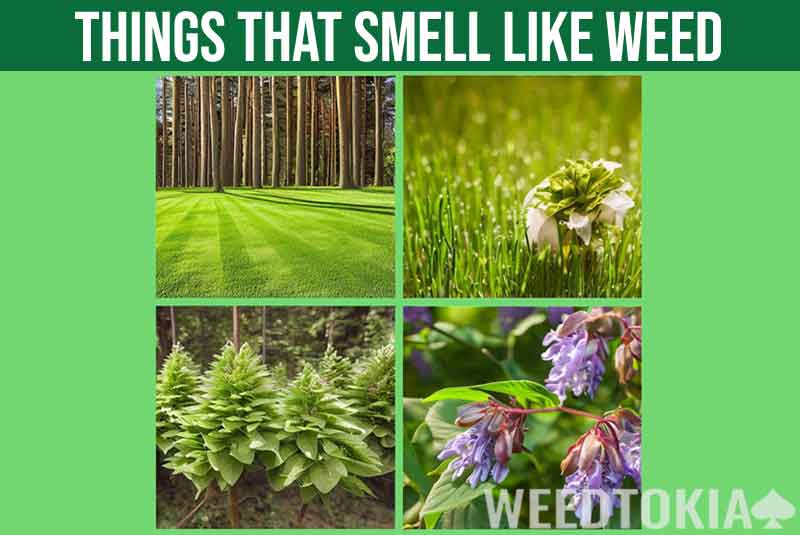
So whether you want to improve your cannabis-detection skills or you’re simply curious about common smells that have a weed odor, read on!
Smells Commonly Mistaken for Marijuana
1. Pine
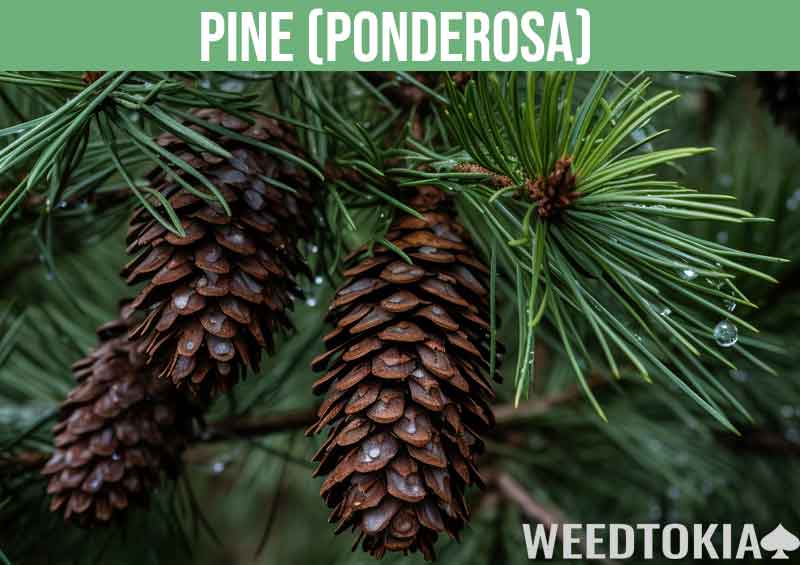
Have you ever heard a pot connoisseur refer to certain strains of weed as “piney”? Pine is one of the smells most commonly associated with good buds, which is probably why the two odors are often mistaken for each other.
But there is a deeper reason for the association between weed and pine scent. The bark of the Ponderosa pine tree contains the terpene delta 3-carene, which is also present in cannabis. So it’s hardly surprising that the smell of a nearby pine forest or a handful of pine needles might call to mind your favorite weed strain.
Some people believe that terpenes affect more than just the odor of a plant. Many users swear that the psychoactive effects of weed are also influenced to some degree by the type of terpenes present.
There might actually be some truth to this theory. Weed strains with a dominant pine character usually contain abundant amounts of limonene. These varieties are generally known for their “uplifting” high and ability to improve focus.
2. Hops (Humulus Lupulus)
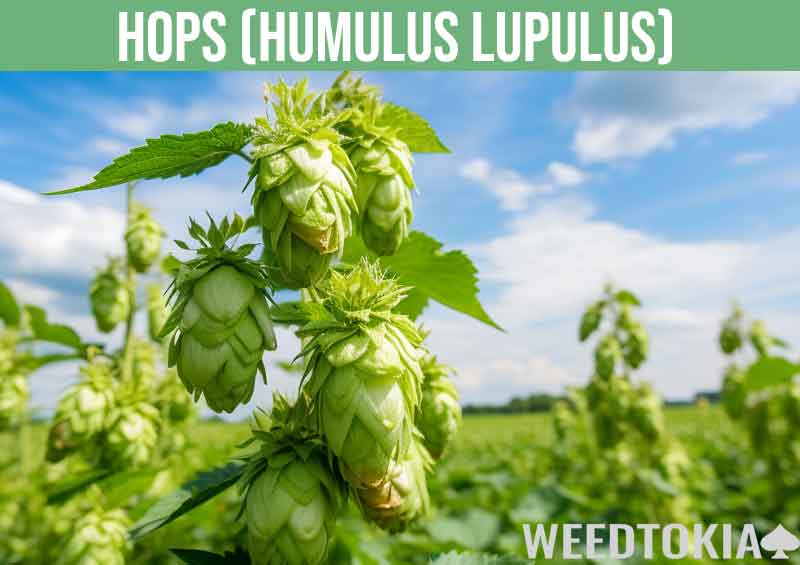
Many people find the smell of the hop plant (Humulus Lupulus) to be remarkably similar to cannabis. Commonly used in brewing beer, hops contain similar terpenes as marijuana, which is likely the reason for the scent resemblance.
Many experienced brewers are intimately familiar with the weed-like smell, which is most apparent when the plant matter is rubbed and crushed between the fingers. For many, the words that often come to mind are “dank,” “musky,” and “skunky,” all of which are frequently used in relation to weed odors.
The association makes more sense when you realize that hops and cannabis both belong to the Cannabacae family of plants. Even the names they are commonly known for are similar. Humulus lupulus is known as the “twining herb,” while cannabis is known as the “erect herb.” In botanical terms, the two plants are practically cousins!
Certain hop varieties smell more like marijuana than others. Cascade and Columbus, in particular, have strong weed-like odor profiles. Those who’ve tasted raw hops even claim that the similarity with cannabis extends to the flavor profile.
3. Cleome Spinosa (Spider Flower)
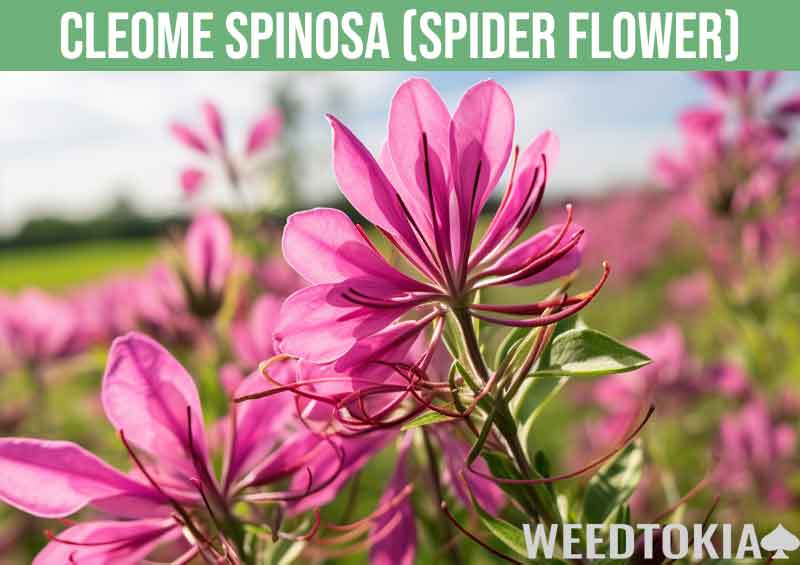
Cleome spinosa is a flower that not only smells like marijuana; it actually looks like it as well! Also known as the “Spider Flower,” its leaves are often mistaken for those of the cannabis plant.
A casual glance at the Cleome’s seven leaflets might lead novices to think that what they’re looking at is weed. But those who know better will realize the difference when they see the edges of the leaves are straight rather than serrated.
Even so, the appearance is close enough that one could easily mistake the Cleome for weed when viewing it from a distance. It’s a good idea to be aware of the similarity in looks and smell if you raise Cleome in an area where weed is illegal.
Most people liken the smell of the Cleome to marijuana combined with a tinge of mint. If you walk by a garden and you detect a marijuana-like odor combined with minty overtones, what you smell might actually be the innocuous Cleome.
4. Freshly Cut Grass
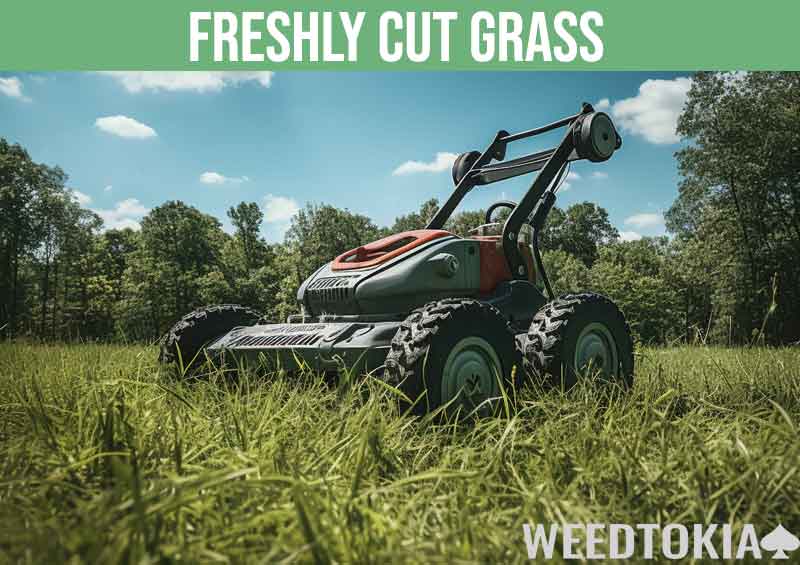
First on our list is freshly cut grass. With a bright and invigorating smell that calls to mind endless summer days spent outdoors, fresh-cut grass has a complex odor profile that is somewhat reminiscent of sticky, resinous buds.
Why does the smell of a newly-mowed lawn remind us of marijuana? This is likely due to the green leaf volatiles (GLV) present in the grass, which is emitted when the blades are cut or damaged.
Science reveals that plants respond to physical injury much like humans do. Like people, they manufacture natural painkillers and healing compounds to assist in trauma recovery. These substances help defend the plants’ physical system and encourage new growth.
Humans undergo a similar process in response to trauma or injury, although most of it takes place internally. With plants, the healing process emits the odorous self-defense chemicals known as GLVs.
These volatile organic compounds help plants heal and regrow after they are cut or otherwise damaged. So the next time you walk by a freshly-mown field and are reminded of marijuana, take a moment to think about how the GLVs are healing the grass!
5. Sweet Woodruff (Gallium Odoratum)
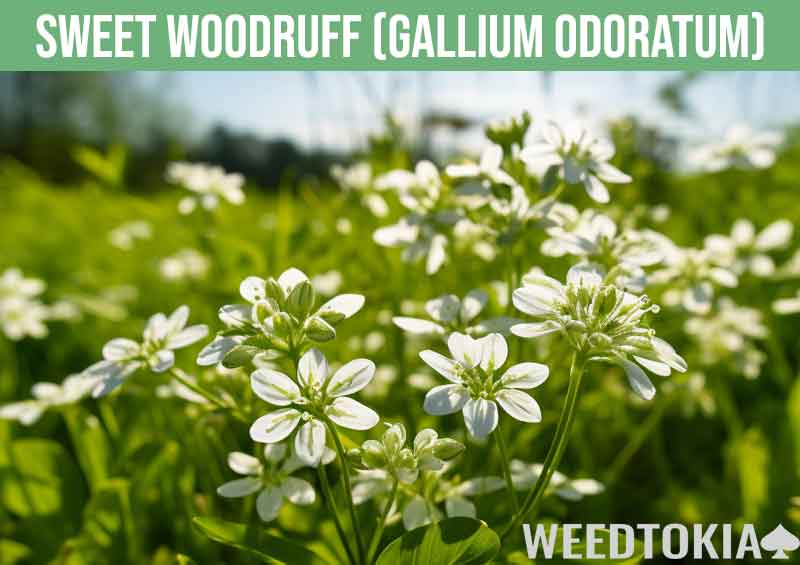
Sweet Woodruff (Gallium Odoratum) is a type of ground cover plant that doesn’t have much of a smell when fresh. But when the leaves and flowers dry up, they become quite odorous, with a scent that is best described as a blend of hay and vanilla.
The distinctive smell of dried Sweet Woodruff can last for years and becomes even more potent over time. Because of the combination of mown hay-and-vanilla odor, the leaves and flowers are a common ingredient in potpourri.
These parts of the plant are even used as a natural insect repellant. This solution is so effective that dried Sweet Woodruff was traditionally placed in linen closets to deter moths.
6. Crucianella or Caucasian Crosswort
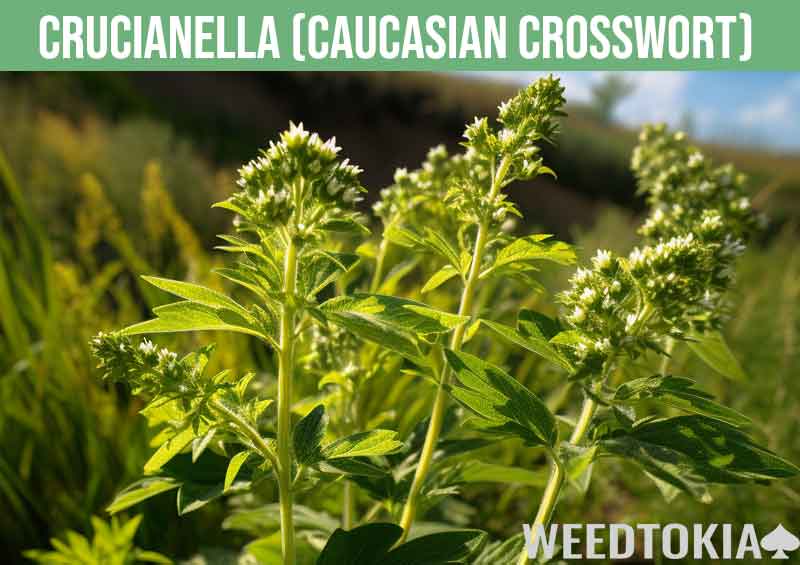
Crucianella (Phuopsis stylosa) doesn’t look anything like marijuana, so few people would mistake one for the other based on sight alone. But take a good whiff of a patch of Crucianella growing in abundance and you would likely think that there is a sizable crop of weed nearby.
Also known as Caucasian Crosswort, Crucianella is a ground cover plant that is endemic to Iran. In the UK, it isn’t quite as common as other garden plants, but it does grow pretty easily and seems to thrive in the English climate.
Crucianella has a fairly mild odor most of the year. But the smell can get pretty intense when the weather turns hot and dry. This often causes passers-by to think there’s marijuana growing nearby.
That’s what happened to a couple in Winford, Bristol in England, who had long cultivated the plant for its pretty pink flowers. Although they were aware of the distinctive smell emanating from their garden, they didn’t think much of it until it attracted the attention of a few local thugs.
Drawn by the smell, a group of masked individuals forced their way into the couple’s property and demanded they hand over their stash. Dismayed to find out that the buds they were seeking were actually flowering plants, they robbed the couple of cash and other personal items instead.
That’s a pretty extreme example of the trouble that can result due to the smell similarity between innocuous plants and weed. Even so, it’s worth keeping in mind if you plan on raising Cleome Spinosa, Sweet Woodruff, or Crucianella, where others can smell them. If you’re looking for things that smell like weed, definitely consider Crucianella.
7. Patchouli
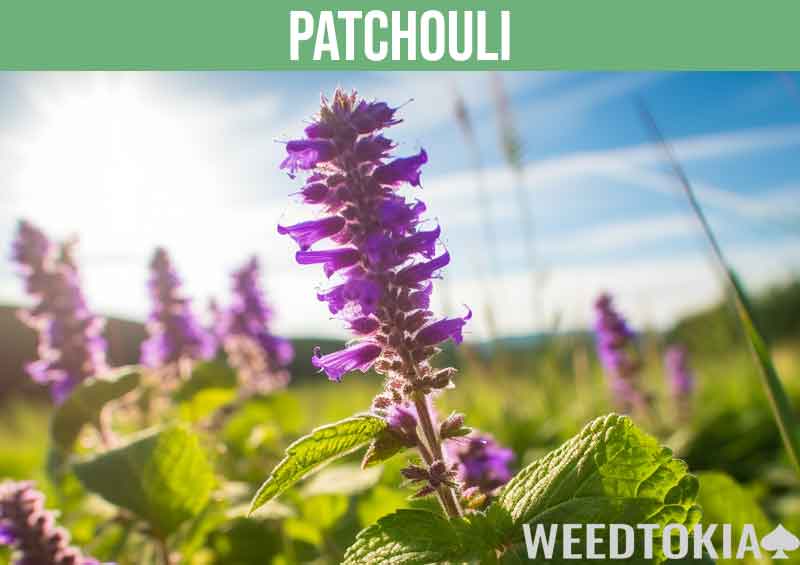
Patchouli oil is commonly associated with hippies, and by further association, with pot smokers. It’s not surprising then that a whiff of the oil calls to mind our favorite herb.
Derived from the patchouli plant’s leaves, patchouli oil has a strong and earthy aroma that is often mistaken for marijuana. This is likely due to the terpene beta-caryophyllene, which can also be found in cannabis plants.
When sniffing patchouli oil, the most dominant odor characteristic is musk. There are also sweet and minty notes that serve to accentuate the earthiness rather than detract from it. Some people refer to the smell as similar to wet soil or a damp basement.
In contrast to patchouli oil’s dark and overbearing odor profile, the plant itself is a dainty little bush with pretty light purple and pink-white flowers. Endemic to Southeast Asia, it thrives in warm tropical and subtropical countries such as China, India, Indonesia, Malaysia, and the Philippines.
Why is patchouli so closely associated with hippies? According to urban lore, the hippies of the 1970s dabbed on the oil liberally to mask the smell of weed. Although the truthfulness of this story is disputed, the connection between patchouli to hippies and pot smoke will likely remain for good.
8. Smokable Hemp
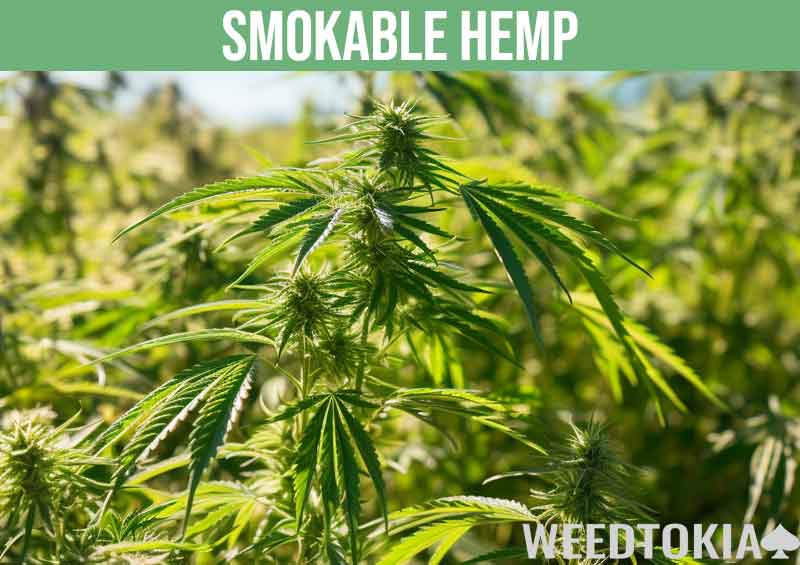
It probably wouldn’t surprise anyone to know that smokable hemp smells like marijuana. After all, both belong to the cannabis sativa species of plants and pretty much look and smell alike. Both can also be smoked, although for different reasons and with different effects.
What we commonly refer to as “weed” is usually smoked for its therapeutic and psychoactive effects. But most people use smokable hemp to reduce stress and relieve pain.
What’s the difference between the two? Why do two plants that are essentially from the same family have such different effects and applications?
The key is the primary active ingredient in each. Marijuana is cannabis that has been bred to have high levels of THC, the substance primarily responsible for weed’s intoxicating effects.
Hemp, on the other hand, is cannabis bred for higher levels of CBD. In comparison to marijuana, hemp contains minuscule, almost insignificant THC levels.
Smokable hemp is sold in many different forms, including cigarettes, cigars, whole buds, and dried flowers. You can even buy pre-rolled hemp joints that smell and taste like the real thing.
Keep in mind that all types of hemp‒smokable or not‒have some THC in them. But unless they are bred specifically for high THC content, they are unlikely to get you high.
That is precisely the case with smokable hemp, which provides only the mildest of buzzes. So apart from sharing a few therapeutic effects and having similar smells and appearance, smokable hemp and marijuana are about as different from each other as any two plants can be.
9. Skunk
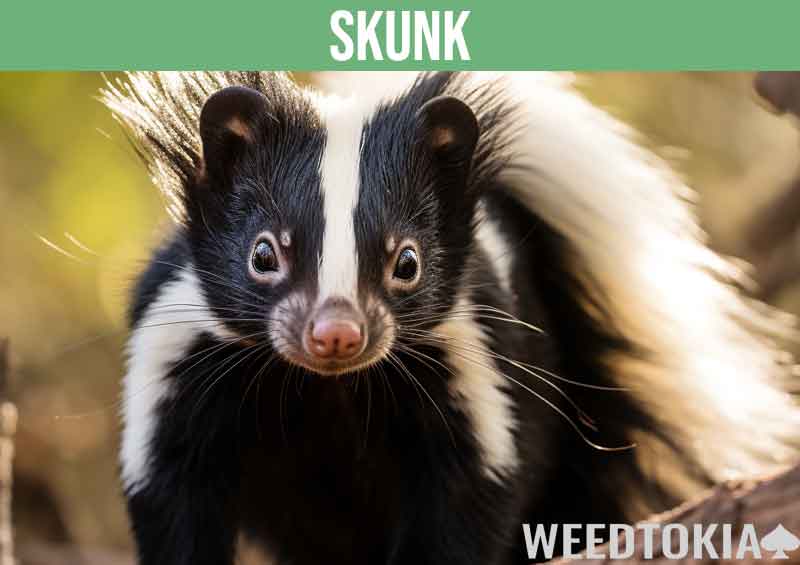
Have you ever wondered why the word “skunk” is so commonly associated with weed? Browse through any strain catalog, and you’ll likely come across descriptives such as “skunk” or “skunky” and possibly even a strain or two with the word “skunk” in the name.
Skunk has become virtually synonymous with potent, high-THC cannabis. This is mainly because of the fetid fluid that skunks shoot from their anal glands when threatened. As unappealing as it may sound, the fluid’s odor is slightly reminiscent of sticky buds.
Once again, the reason is terpenes. The spray that skunks release contains a type of terpene known as “thiols.” Marijuana itself has over 120 terpenes that smell like thiols, so comparisons‒as unpleasant as they are‒are inevitable.
10. Cheese (Limburger)
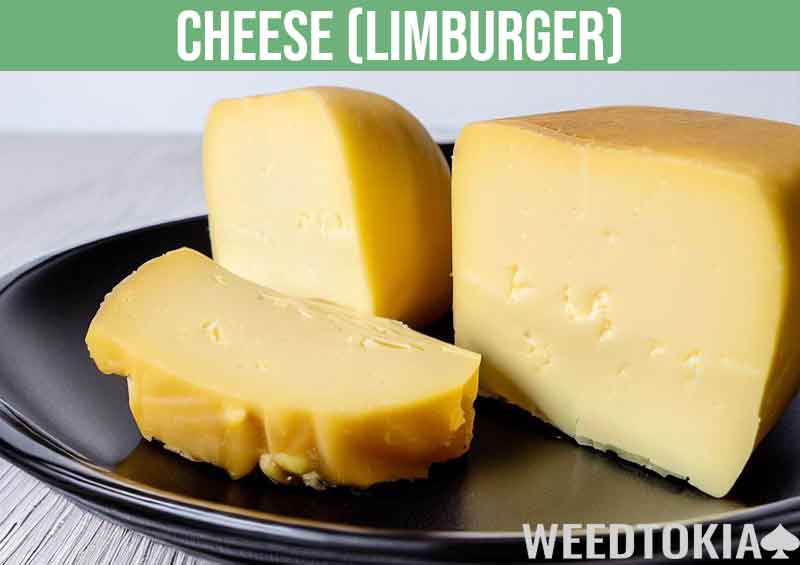
Believe it or not, some people associate the smell of cheese with marijuana. In fact, there is even a popular strain of cannabis known as “Cheese.”
The olfactory link between cheese and weed might not make much sense to some. But take a good whiff of a strong variety such as Limburger or Munster, and see if the strong and pungent smell doesn’t call to mind certain strains of bud.
As with many things that have a similar smell to marijuana, the terpenes are likely the reason. In cheese, the similarity can be traced to acids in the terpenes, particularly caprylic or octanoic acid.
Commonly present in the milk of mammals, caprylic acid is produced during the process of making cheese. It gives the product that characteristic “sweaty feet” smell, which, like it or not, some people associate with marijuana.
11. Perfumes
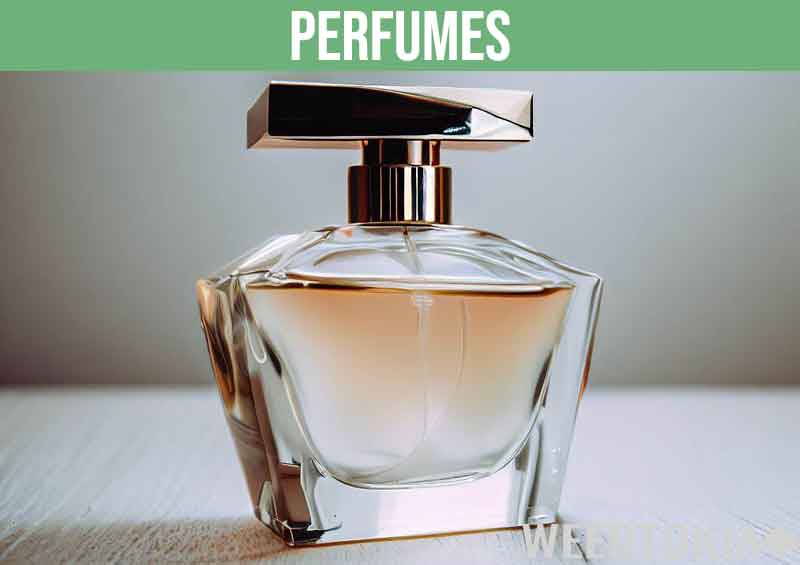
There was a time when people dabbed on perfume or cologne to mask the smell of marijuana on their clothes, hair, and skin.
Not anymore. The increasing acceptance and tolerance of all things weed-related have encouraged people to exhibit their affinity for weed by way of colognes and perfumes.
Some perfume companies have already launched perfumes that resemble more decent-smelling weed strains, like Blue Dream, OG Kush, and Space Cake.
Weed-smelling perfumes don’t actually contain cannabis. But they do have natural terpenes that are commonly found in cannabis plants.
So the next time you come across someone who smells like weed, it might just be the new perfume they’re wearing!
12. Burning Rubber
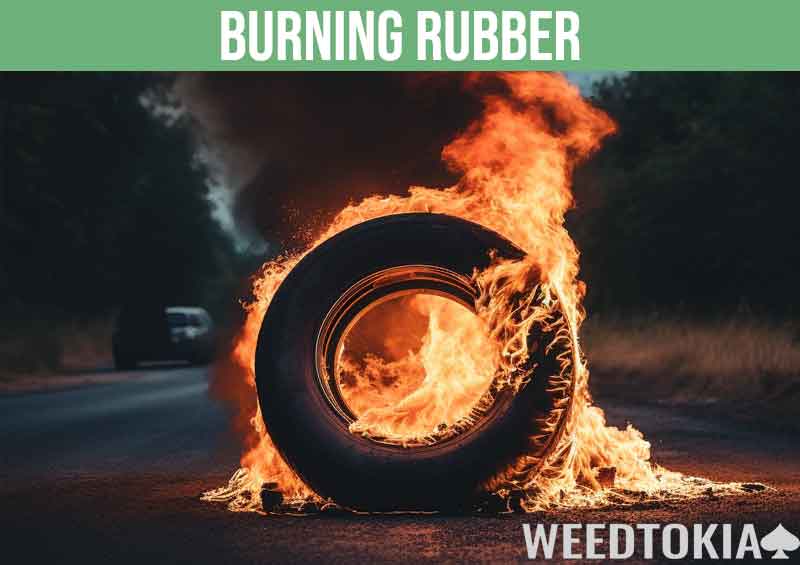
Burning rubber can give off a smell that is remarkably similar to marijuana. If you’ve ever been near a burning tire, you’ve probably smelled the powerful, pungent odor firsthand.
Some liken the smell to burning hair or plastic. If the smell reminds you of a batch of weed you once had, that particular stash was probably sprayed with neem oil.
Neem oil is a vegetable oil derived from the seeds and fruits of the neem tree. Also known as margosa oil, it is used to get rid of spider mites from cannabis plants. If your weed has a singed hair or burnt rubber odor, it was probably treated for mites with neem oil.
Even without neem oil, some bud strains can have that rubber or plastic scent. This is the case with many Kush strains, although the smell might be closer to fresh rubber than a burnt tire.
13. Grandpa’s Closet

Have you ever opened your grandfather’s closet and been greeted by the distinctive smell of weed wafting out? Unless your Paw-Paw has a stash of primo bud you don’t know about, what you smell might be something else entirely.
Old wooden cabinets that haven’t been opened in a long time tend to develop a woody aroma that some might describe as “moist” or “earthy.” As with many other things with a weed odor, this is due to the terpenes in the wood.
Check out some weed strains with “OG” in the name, such as Hellfire OG. Chances are the odor will remind you of your grandpa’s cedar closet.
If you’re unfamiliar with the smell, it isn’t particularly unpleasant. A few strains have even been named in homage to the smell, such as Grandpa’s Stash and Grandpa’s Gun Chest. With subtle hints of leather and chai accentuating the cedar odor, these strains will almost certainly remind you of your dear old Granddad!
TLDR: What Causes Things To Smell Like Weed?
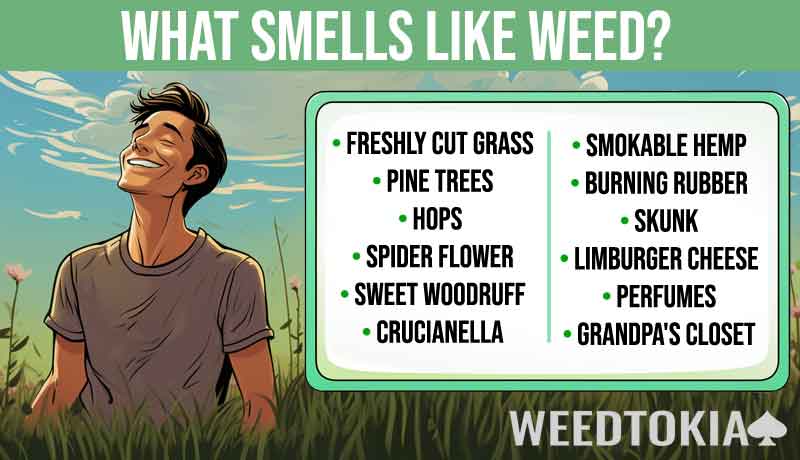
As you can see, there are many things that smell similar to weed, some of which bear more than a passing odor resemblance. For most of these examples, terpenes are the likely culprits, misleading you into thinking that you may have stumbled onto a covert grow operation in your neighborhood or a secret stash in your grandfather’s closet!
Perhaps the most important lesson to learn from all this is that things aren’t always what they seem, even smell! So the next time you detect the smell of good herb or sticky buds, ask yourself if it isn’t just terpenes playing tricks on your senses!